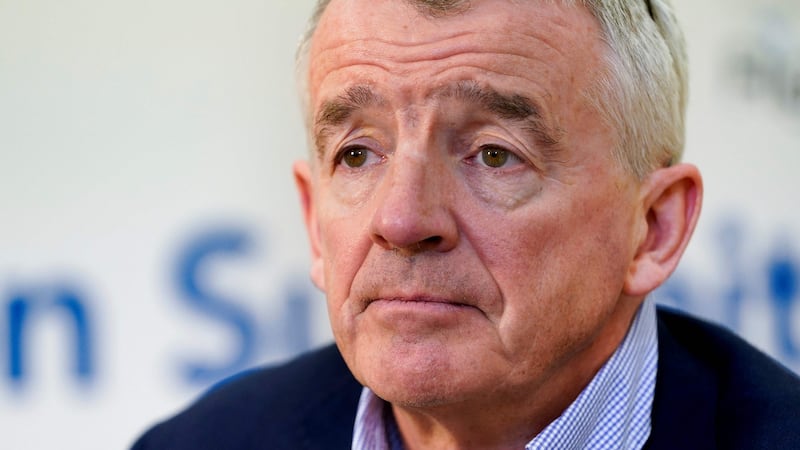“Exit strategy” is a complete misnomer. Without a vaccine or a proven therapy there is no exit from coronavirus, only containment. And there is no settled strategy. Governments across the world are either persisting in lockdown or pulling themselves out in different ways and at different speeds.
In New Zealand they've opened coffee shops and fastfood outlets, but not sit-down restaurants. Denmark is allowing children back into nurseries and primary schools, but not secondary schools.
In the US, one of the last to enter a lockdown, individual states are reopening schools, shops, churches and cafes without testing or contact tracing, and despite the country having its largest single-day spike in cases as recently as last Friday. Thousands are flouting stay-at-home directives, and flocking to beaches to enjoy an early-season heat wave.
The Government here has taken a more cautious approach, and is expected to make only limited changes to the restrictions on May 5th, or perhaps none at all.
This country-by-country approach is taking place under the threat of a second global wave or outbreak: the disaster scenario that will turn global recession into global depression.
Most epidemics have several waves. This is what happened with the Spanish flu pandemic of 1918, the deadliest in history – the first wave in the spring was followed by a second more virulent wave in the autumn.
Economic fallout
Policymakers are split between those who want to suppress the virus further to prevent a repeat outbreak and those who want to lift the restrictions quicker to limit the economic fallout.
This is a real Catch-22, with legitimate concerns on both sides – and the stakes couldn’t be higher.
Germany's transmission rate rose this week, less than two weeks after federal states there reopened schools and factories. The reproduction rate or "RE" number – the rate at which an infected individual infects others (a variable being closely monitored by health authorities everywhere ) – rose to 1.0 from 0.7 in mid-April, the Robert Koch Institute for disease control said on Monday.
Authorities have downplayed the significance of the increase. Maybe it wasn’t related to the easing of restrictions – there are many variables swirling in the ether, and epidemiology is a complex business – but it illustrates how far we are from an exit strategy.
A strict definition of containment is having one new case per day per million of population – South Korea’s recent average. We’re nowhere near that here.
Infection rates, hospital admissions and deaths are all declining, but they’re still high.
If the “RE” number lifts here after an easing of restrictions on May 5th and we’re forced to back-pedal, the economic damage and the current rumblings of discontent will be amplified. Both have the potential to weaken the public’s resolve, something that is already on the wane judging from the pick-up in footfall and traffic.
Hence the Government’s messaging has shifted in recent weeks from one of “we’re all in this together” to one of expectation management and cautioning against complacency.
Minister for Health Simon Harris said there would be no "big bang moment" on May 5th, and that most social distancing measures would remain in place.
Infrastructure
Mass testing of asymptomatic people appears to be the defining measure of success globally in tackling the virus, but it's not obvious we have the infrastructure in place for it. Cillian De Gascun, chairman of the Government's National Public Health Emergency Team (NPHET), said that just under 35,000 tests were carried out last week. The HSE's target is 100,000.
Another big aspect to all this that has been fudged up to now is the fact that certain businesses don’t seem compatible with even the lightest social distancing measures.
Is anyone enthused by the prospect of sitting in a half-empty restaurant being served food by a person in a mask and latex gloves? Most restauranteurs say their businesses would not be viable under such conditions anyway.
The pub is an equally bewildering proposition in the age of social distancing.
Ryanair boss Michael O'Leary has also rubbished the idea of allowing commercial flights to resume with middle seats left empty, saying the company would go under if its flights were only two-thirds full.
And that is assuming mass air travel resumes any time soon, hard to envisage in the context of 14-day quarantine protocols upon entering countries and general consumer wariness.

Maybe there are workarounds for these people-facing businesses, but they’re not obvious from this vantage.
Even with an easing of lockdown measures, the “new normal” poses a major threat to the hospitality and retail sector, the State’s largest employers.
Mass insolvencies
To prevent mass insolvencies the UK is now pledging to provide small firms with 100 per cent taxpayer-backed coronavirus rescue loans of up to £50,000 (€57,000), accessible without cumbersome credit checks and within days.
A Central Bank of Ireland study, published last week, estimates that small- and medium-sized businesses here in vulnerable sectors may need up to €5.7 billion in emergency liquidity to help them through the crisis .
This is nearly six times the €1 billion currently available through various Government-backed schemes.
There’s no easy way out of all this. We’re facing a once-in-a-lifetime event.










